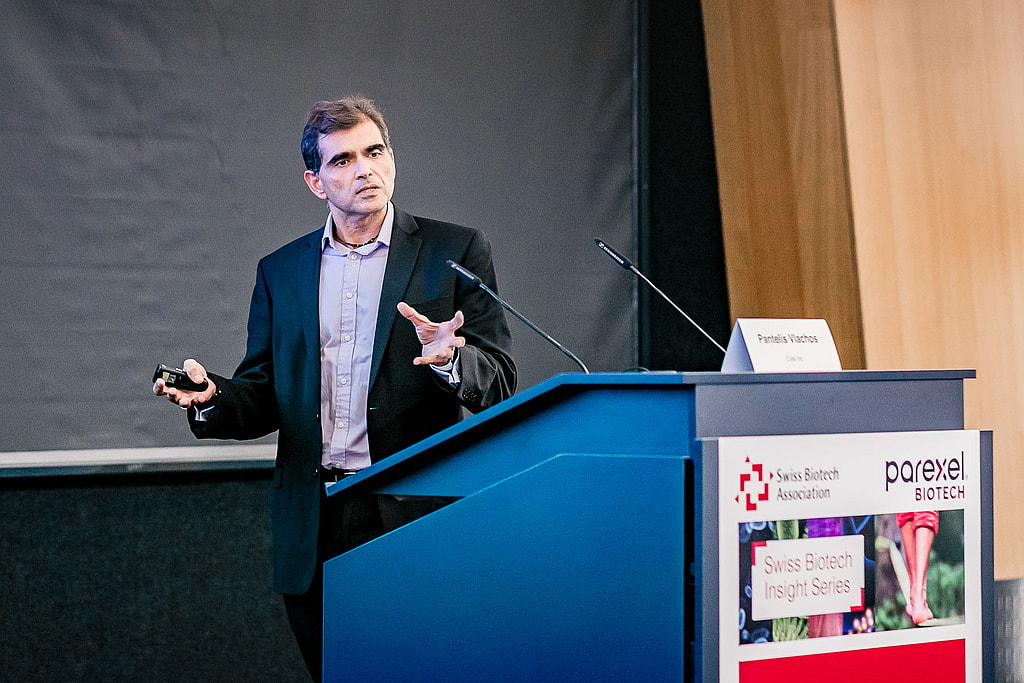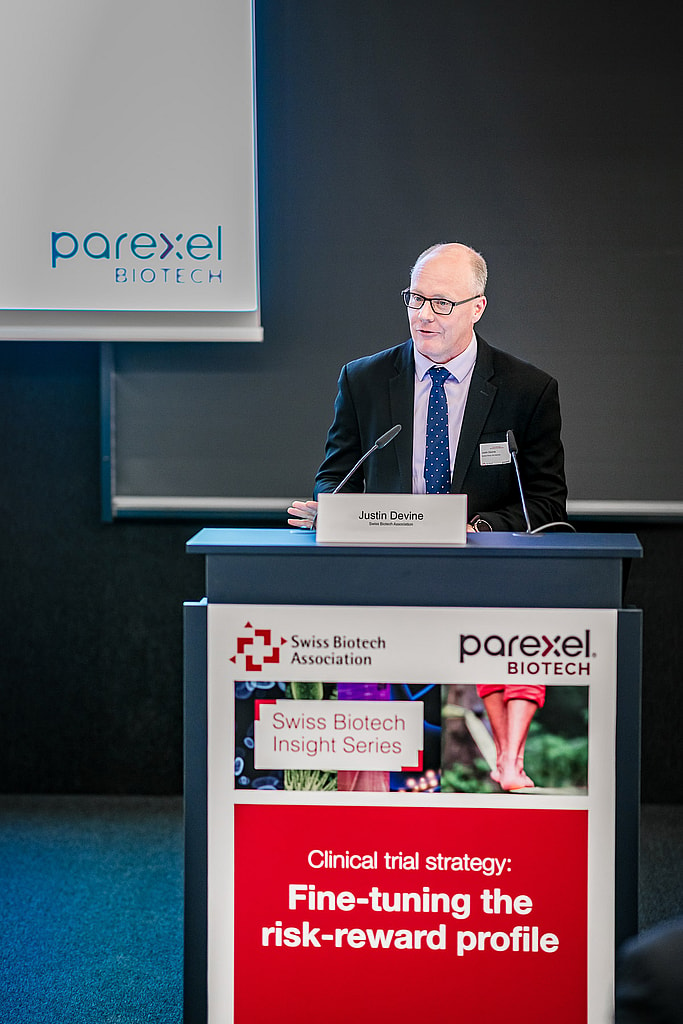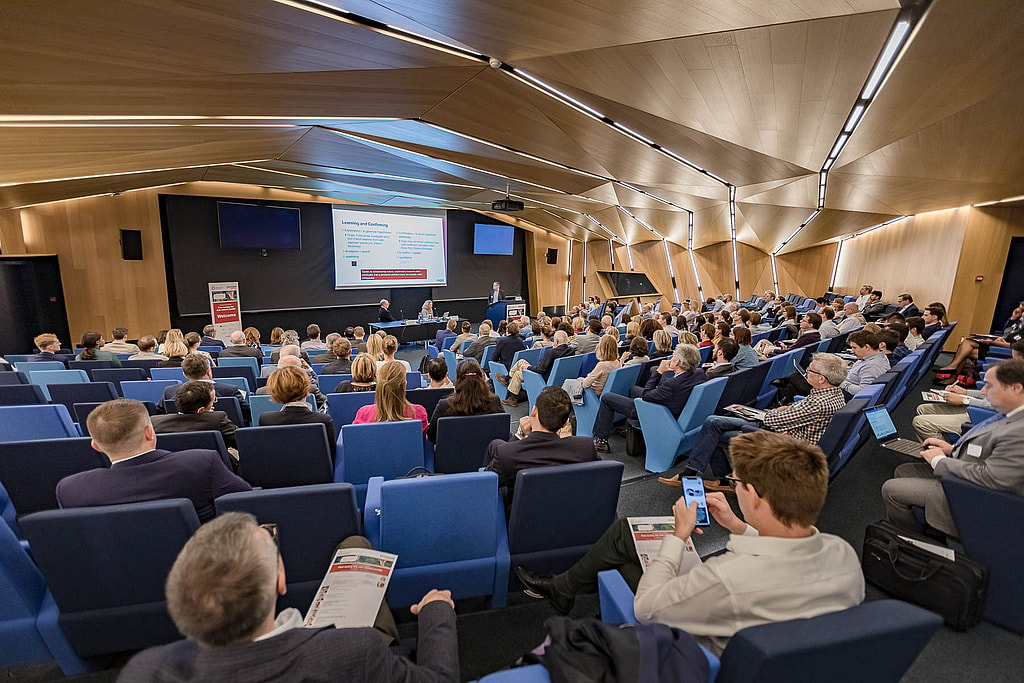- Tuesday, November 19, 2019 @ 5:00 pm
Failure rates in clinical trials remain stubbornly high, but leading experts have identified a number of ways how clinical development methods can be optimized. The Swiss Biotech Association’s Insight event series mirrors the biopharma product life cycle from ideation to commercialization.
At this September’s event, the association joined forces with Parexel to address major clinical trial strategy challenges, bringing together 12 speakers from three continents with a focus on sharing learnings and deriving implications for the future.
Despite best efforts, the rate of late stage clinical trial failures remains frustratingly high for the amount of time and expenditure involved. Given the vast amounts of capital invested in taking potential new therapies through to Phase III, the price of failure can have severe consequences for the industry as a whole, meaning there is a pressing need to optimize clinical trial strategy.
Experts who have studied the high failure rates believe it is necessary to rethink the early phases of clinical development, as optimizing these smaller trials can help de-risk the larger and more costly ones to come. Pantelis Vlachos, director of strategic consulting at Cytel, points out that one of the main reasons behind more than half of Phase III failures is because investigators did not identify the right dose level in earlier phases.

“The information gathered at the proof of concept stage is typically sub-optimal for dose selection because it is too narrow,” he said. “There needs to be special emphasis on identifying the correct dose level earlier, so you have a better chance of winning later on.”
According to Vlachos, a better solution could be to use an adaptive approach for designing these early phases. This means trials are pre-planned with various statistical models in mind, and results from interim data analyses are used to modify the ongoing trial, a more flexible approach which has the potential to achieve a more precise understanding of the relationship between dosage and treatment response.
“One of the issues with standard designs is that they usually focus on the statistical models for analyzing the data at the very end of the process, but it’s actually at the design stage where you need to ensure that the trial is adequately examining the range of doses needed to build these models,” said Vlachos.
Between the early 2000s and 2014, the number of early phase trials using adaptive designs increased from 1.8% to 6.5%. Vlachos expects this to increase far more in coming years with a number of major pharmaceutical companies starting to turn to these methods and the FDA issuing draft guidelines for their use.
“They’re becoming more and more accepted as people recognize that the classical methods have some significant defects,” he said. “Novartis are now exclusively using these methods in their early phase dose estimation trials, and the same with Roche.”
But as well as improving trial design, other scientists believe there is a growing need for biomarkers to become increasingly involved in the clinical trial process for a range of applications. These include predicting which patients may be best suited for a particular therapy, aiding dose selection, and improving safety by excluding patients likely to have an adverse reaction to a treatment.
But right now biomarkers are only used to a very limited extent in clinical trials. Last year, only 20% of the drugs approved by the FDA, came with biomarkers for defining the appropriate patient population.
Justin Devine, director and chief medical officer at Synexa Life Sciences, feels this has to change. “In the most recent studies, about a third of drugs in Phase III failed for safety reasons,” said Devine. “This shouldn’t be the case. Where biomarkers have their greatest value is in improving decision making about whether a product should be progressed through the pipeline based on its efficacy and safety or potentially redirected to a different indication.”

So far, the majority of biomarkers used clinically are single molecules such as the HER2-ECD protein which is used to guide personalized breast cancer treatments. However, Devine envisages much of the future use of biomarkers as being in the form of composite biosignatures - different combinations of biomarkers which can be used to tailor everything from dose selection to patient stratification for clinical trials.
However, identifying and then validating these biosignatures is a complex process, one which Devine admits is a little way off. It also remains to be seen whether using biomarkers to identify patient subgroups within a particular disease is an economically viable approach.
“The reality is biology is a complex beast,” he said. “While there are almost certainly going to be subsets of people for whom a particular therapy may be very well suited, it can be difficult to figure out those groups of patients. There is also the question of whether it’s financially viable to develop a treatment purely for that subgroup, if it’s a very small patient population. There would need to be reimbursement strategies put in place to allow stratified therapies to be made available to people for whom they are best suited.”
While many of the practical aspects of future biomarker-guided clinical trials still need to be addressed, implementing these ideas has the potential to make a vast difference to the clinical trial process. Exploring new methods for trial design and improving decision making within clinical development could help save billions of euros in revenue, as well as helping to usher in a new era of personalized treatments for chronic diseases.

